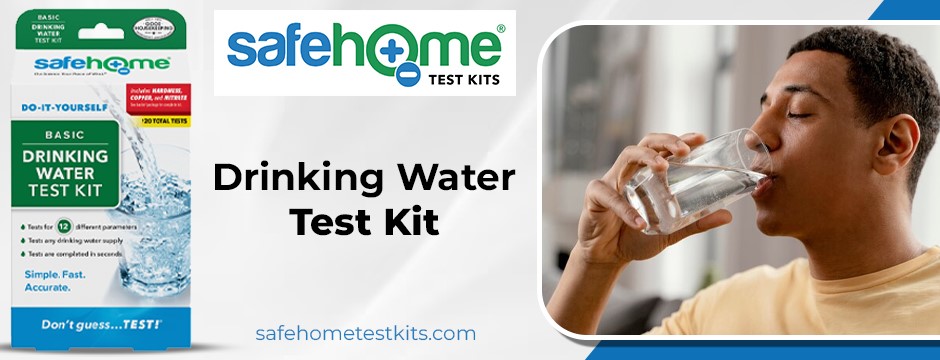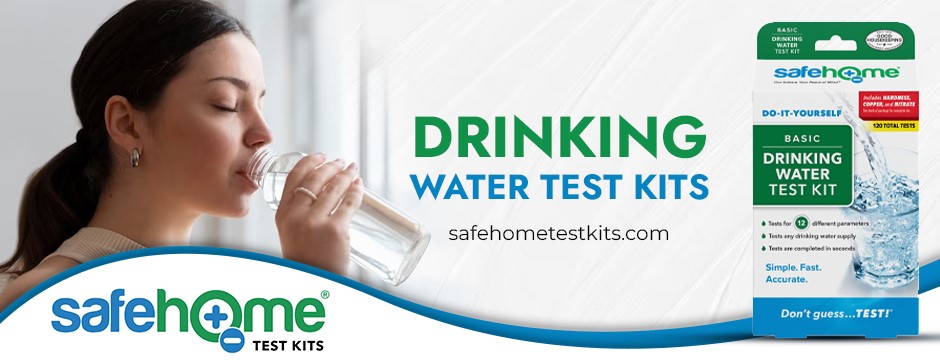The ABCs of Water Contaminants: Understanding & Identifying Harmful Substances

Water contamination is a global concern, affecting millions of people. By understanding the various contaminants in water sources, you can play a crucial role in ensuring safe drinking water and protecting public health. This comprehensive guide will equip you with the knowledge of the ABCs of water contaminants, empowering you to identify and address them effectively.
A is for Arsenic:
Arsenic, a naturally present element, is a silent threat that can contaminate groundwater, leading to severe health complications. Skin lesions, cardiovascular diseases, and various forms of cancer are just some of the health risks associated with exposure to arsenic-laden water. This is why testing water sources for arsenic contamination is not just a suggestion, but a necessity to protect public health. Detecting elevated levels of arsenic enables the implementation of targeted mitigation strategies, including water treatment methods, to reduce exposure and mitigate health risks associated with arsenic contamination. Thus, proactive testing and remediation efforts are crucial for ensuring the safety and well-being of individuals and communities reliant on groundwater as a drinking water source.
B is for Bacteria:
Bacteria such as E. coli and coliforms are frequently detected in water sources tainted by sewage or animal waste. These microbial contaminants pose significant health risks, especially for vulnerable groups like children and older people. Exposure to such bacteria can lead to gastrointestinal ailments, comprising symptoms like diarrhea, vomiting, and abdominal cramps. Therefore, conducting routine tests to detect bacterial contamination is not just a precaution, but a necessity for safeguarding the potability of drinking water and curbing the spread of waterborne illnesses.
By promptly identifying the presence of harmful bacteria in water sources, proactive measures can be taken to mitigate health hazards and ensure the well-being of communities. Regular testing serves as a vital preventive practice, allowing for the early detection and remediation of bacterial contamination to uphold water safety standards. Ultimately, prioritizing the assessment of bacterial presence in water sources contributes to protecting public health and preventing waterborne diseases, promoting safer environments for all.
C is for Chlorine:
Chlorine is a prevalent disinfectant utilized in water treatment facilities to eradicate harmful bacteria and pathogens, ensuring the safety of drinking water. Although chlorine effectively neutralizes microbial contaminants, prolonged exposure to elevated chlorine levels in drinking water can pose health risks. Respiratory irritation and increased susceptibility to certain cancers are potential health concerns associated with excessive chlorine exposure. Therefore, monitoring chlorine levels in drinking water to uphold water quality standards and mitigate potential health hazards is imperative.
Water treatment facilities can balance disinfection efficacy and minimize health risks associated with chlorine exposure by ensuring appropriate chlorine levels. Regular monitoring and maintenance of chlorine levels contribute to safeguarding public health and promoting the provision of safe and potable drinking water to communities. Maintaining optimal chlorine levels in drinking water is essential for preserving water quality and minimizing potential health risks associated with chlorine exposure.
D is for Dissolved Solids:
Dissolved solids encompass many inorganic and organic substances found in water, including minerals, salts, and metals. Elevated levels of dissolved solids can adversely affect water taste and quality, leading to issues such as scaling in plumbing fixtures and appliances. Testing for dissolved solids is essential in identifying water quality concerns and guiding appropriate treatment measures to enhance water taste and clarity. By monitoring and managing dissolved solids levels, potential issues related to water quality can be addressed proactively, ensuring clean and palatable drinking water to communities.
E is for Endocrine Disruptors:
Endocrine disruptors are chemical compounds that interfere with hormonal systems in humans and wildlife, potentially resulting in adverse health effects such as reproductive problems, developmental disorders, and hormone-related cancers. Common endocrine-disrupting chemicals in water sources include bisphenol A (BPA), phthalates, and pesticides. Monitoring for endocrine disruptors in water is crucial for safeguarding human health and the environment. By identifying and addressing the sources of endocrine-disrupting chemicals, measures can be implemented to mitigate their impact on water quality and protect the well-being of individuals and ecosystems alike. Regular monitoring and assessment of water sources for endocrine disruptors contribute to the maintenance of safe and healthy water supplies for communities.
Introducing Safe Home® Drinking Water Test Kit

Choosing the Right Water Testing Kit for Your Needs
Whether you rely on city water supplies or have a private well, ensuring the safety of your drinking water is of utmost importance. Safe Home® offers two comprehensive testing solutions tailored to different situations, each providing essential insights into water quality. With these test kits, you can feel confident in the safety of your water.
Safe Home® Premium Drinking Water Test Kit: Comprehensive Analysis for Treated Water Supplies
Ideal for those connected to treated city water supplies, the Safe Home® Premium Drinking Water Test Kit offers a detailed evaluation of water composition. It assesses various contaminants, including metals like copper, arsenic, and lead, as well as physical properties such as hardness and turbidity. This kit is designed to provide peace of mind by thoroughly analyzing 50 contaminants, enabling informed decisions about water treatment and protection against potential health risks.
Safe Home® Ultimate Drinking Water Test Kit: Unparalleled Testing for Well Water Owners
For individuals relying on well water, the Ultimate Drinking Water Test Kit from Safe Home® is the go-to solution. This kit is the most comprehensive option available, covering 200 different parameters to ensure thorough analysis. This kit leaves no stone unturned, from metals and physical properties to pesticides, herbicides, and volatile organic compounds (VOCs). The Ultimate Drinking Water Test Kit provides unparalleled peace of mind for well water users with its extensive testing capabilities and convenience features like water collection vessels and free return shipping.
Conclusion
Understanding the ABCs of water contaminants is not just about knowledge; it’s about taking responsibility for public health and ensuring access to safe drinking water. By identifying and monitoring the presence of harmful substances such as arsenic, bacteria, chlorine, dissolved solids, and endocrine disruptors, you can take proactive measures to mitigate risks and protect water quality. Your regular testing and treatment of water sources are crucial steps in addressing water contamination and ensuring the health and well-being of communities worldwide.
Get more guidance from our experts for your peace of mind. Call us at 888-932-6699 or drop an e-mail at info@safehometestkits.com and get in touch!


